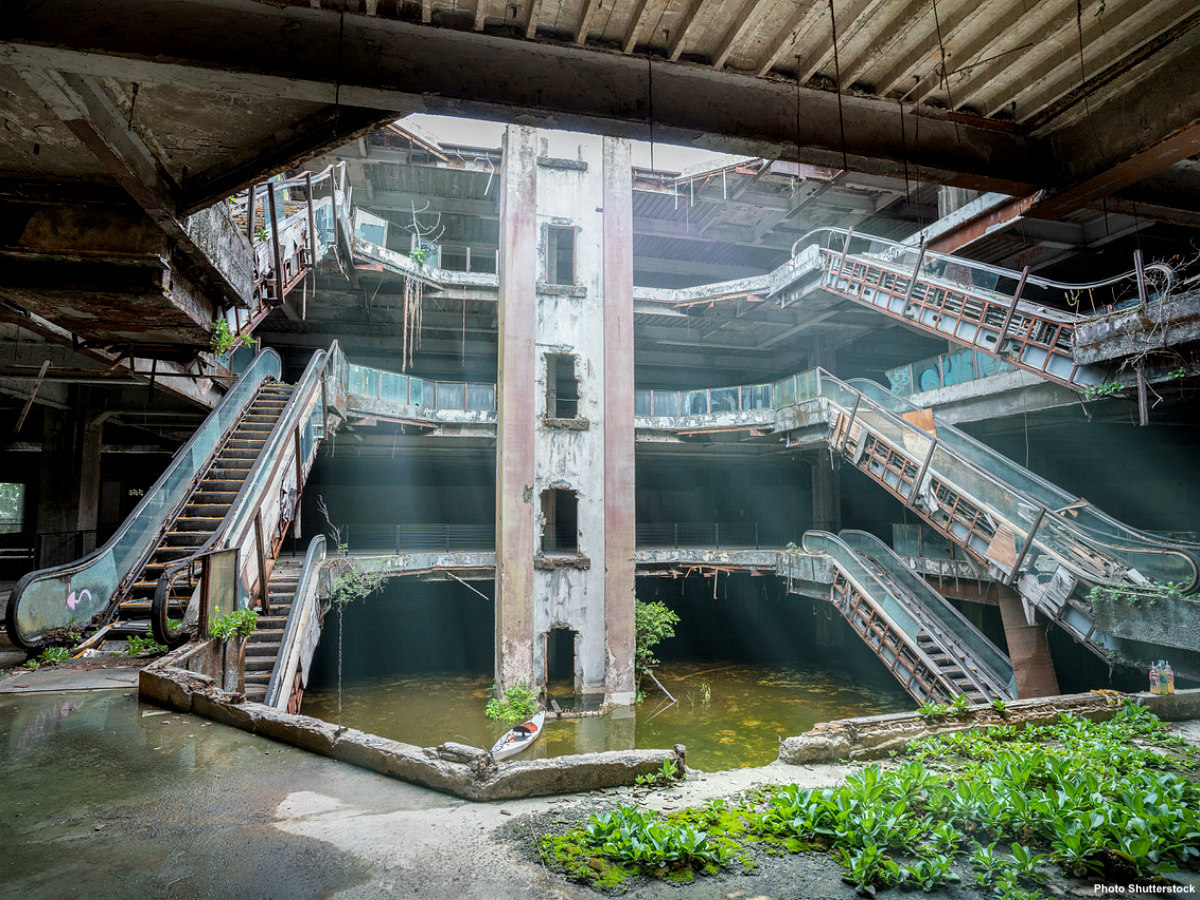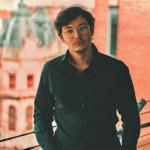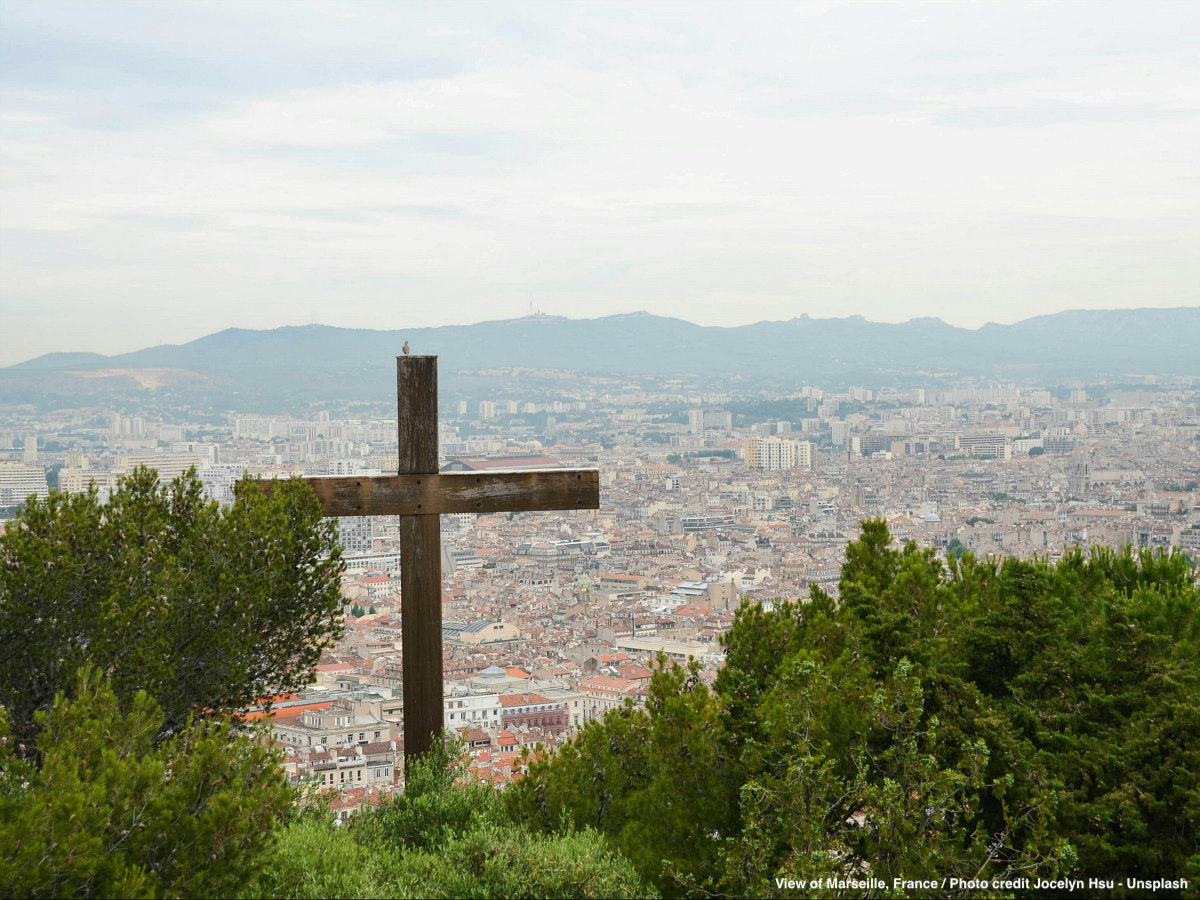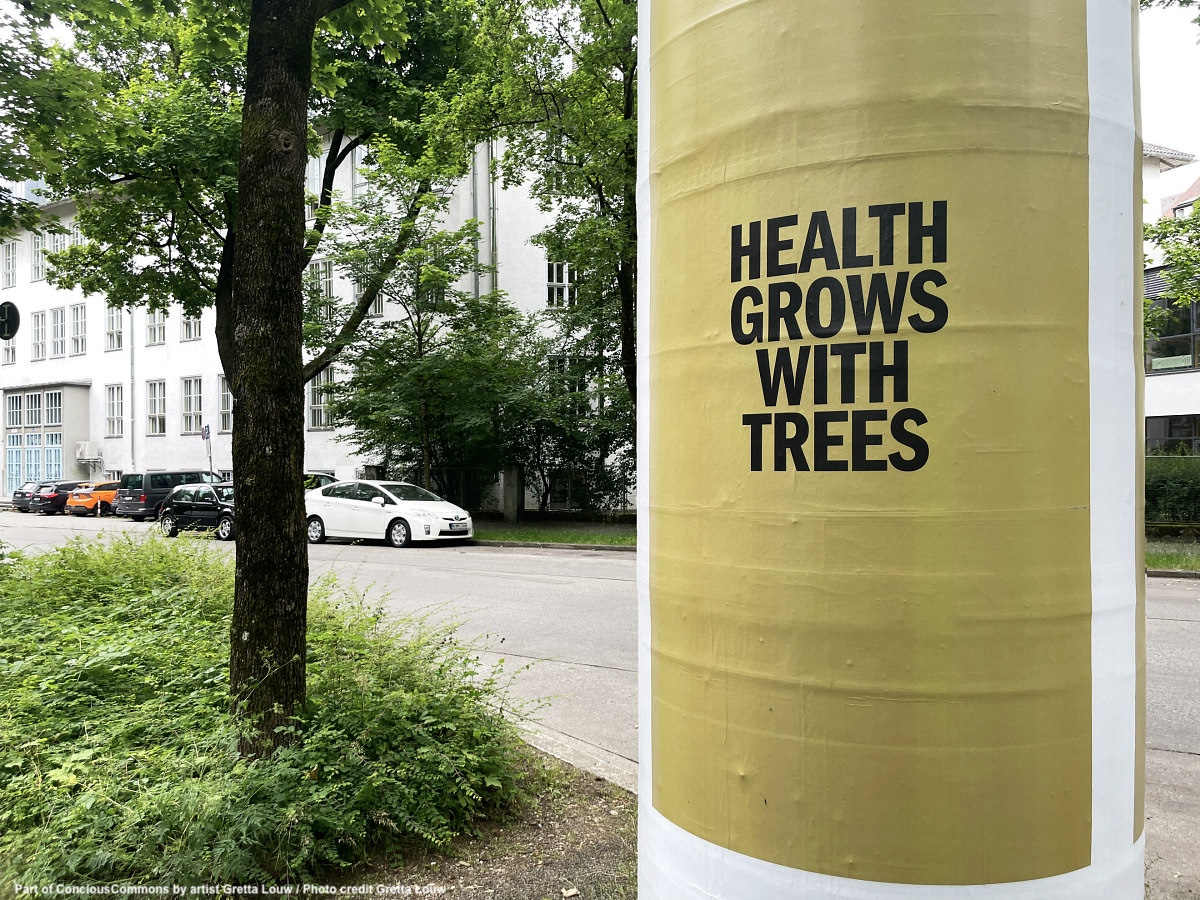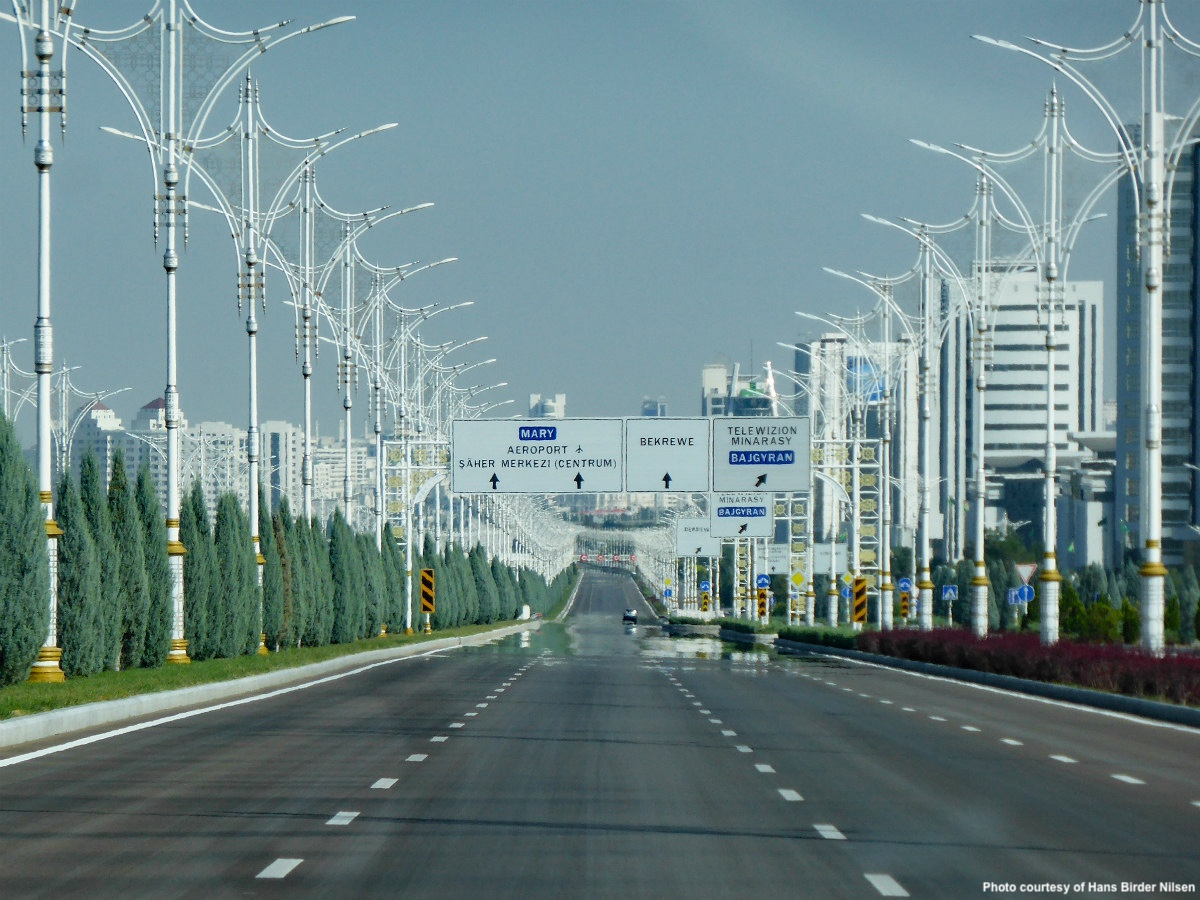In the old neighborhood of Banglamphu, Bangkok, there is a 20 000 m2 abandoned commercial center called ‘New World’ Mall. Sometimes illegally photographed and often fantasized with ghost stories and daredevils’ videos on the internet, the so-called contemporary ruin draws people’s curiosity. Opened in 1984, the mall served as a catalyst for the whole neighborhood economy until it closed its doors in 2004. A visitor was killed during the demolition process of seven floors which were illegally built. Legal action followed against the ‘New World’ Mall’s owner who eventually lost his title to the landlord.
Falling into disrepair, the mall with a collapsed roof quickly became a post-apocalyptic place where water held in and mosquitoes abounded, leaving no other choice to the surrounding local community but to introduce Koi fishes in the mall to deal with the plague. Unsurprisingly, the dystopian fish palace turned into another illegal urbex destination, or abandoned urban exploration site, that are commonly found within the city center of Bangkok.
Southern from Banglamphu, in Saphan Taksin, one of the busiest stations of the Bangkok Skytrain, I remember reading the big advertising panel: “ICON SIAM: the icon of eternal prosperity” that refers to the 1.6 billion $ award-winning mall built in 2018 and still in operation. Strikingly another icon, Sathorn Unique, rises for the human-eye behind the ad. The abandoned, decaying and monumental 47-stories luxury estate tower, whose construction began in 1990 and never finished, still stands in roman-style columns designed by architect Rangsan Torsuwan. This contemporary ruin swapped its name to ‘The Ghost Tower’ during the financial crisis that gripped much of East and Southeast Asia in the late 1990s. The Thai market collapsed in 1997, leaving millions of households without savings overnight and causing an abrupt stop of at least 300 massive development projects in the capital alone.
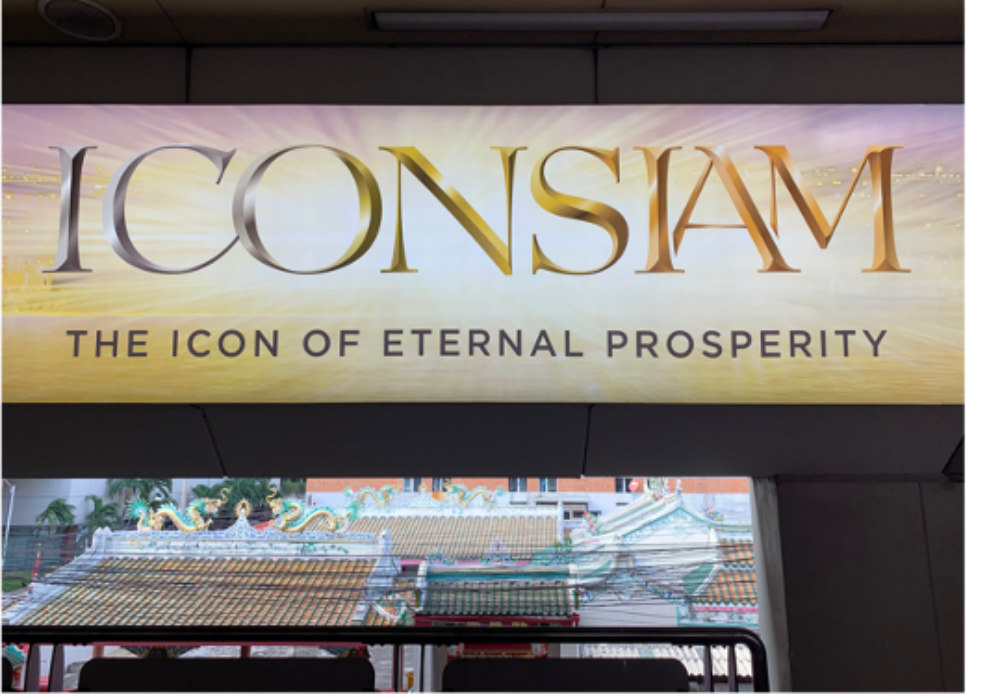
Malls, but also condominiums and luxury hotels, have long been advertised in Thailand as pillars of the “future” and benefited from massive investments ever since 1984, when the Thai government enacted land titling legislation that delivered more than 19 millions titles to landowners and opened the market to foreign capital. These investment projects, advertised as ‘the best the world has to offer’, embody a standardization of Thai society and the inability of public institutions to control land development. The resulting “laissez-faire” leads to a staggering loss of social vitality and the destruction of commons. Thai citizens keep losing their access to the land, occupied by amenities they cannot afford to use anymore.
This ironic dichotomy of Thai speculative urban development which has so far turned buildings into either “icons of eternal prosperity” or “offbeat sites with abandoned skyscraper” (as for the caption given by Google maps for the Sathorn Unique Tower) has not permitted to address the most pressing issues of the capital: finding a sense of belonging again…or so it seemed, until recently.
***
The ‘New World’ Mall has epitomized a peaceful local fight to reclaim alternative public space for the community of Banglamphu and other neighborhoods in the city. I met Dr. Supitcha Tovivich in Bangkok, an architect and professor at Slipakorn University who has so far spearheaded two temporary uses in the abandoned mall in a sign of growing urban activism in Bangkok. During the pandemic, she told me, she contacted the landlord of the ‘New World’ Mall, and both viewed this contemporary ruin as an opportunity to empower the community and change people’s perspective over the colossal space.
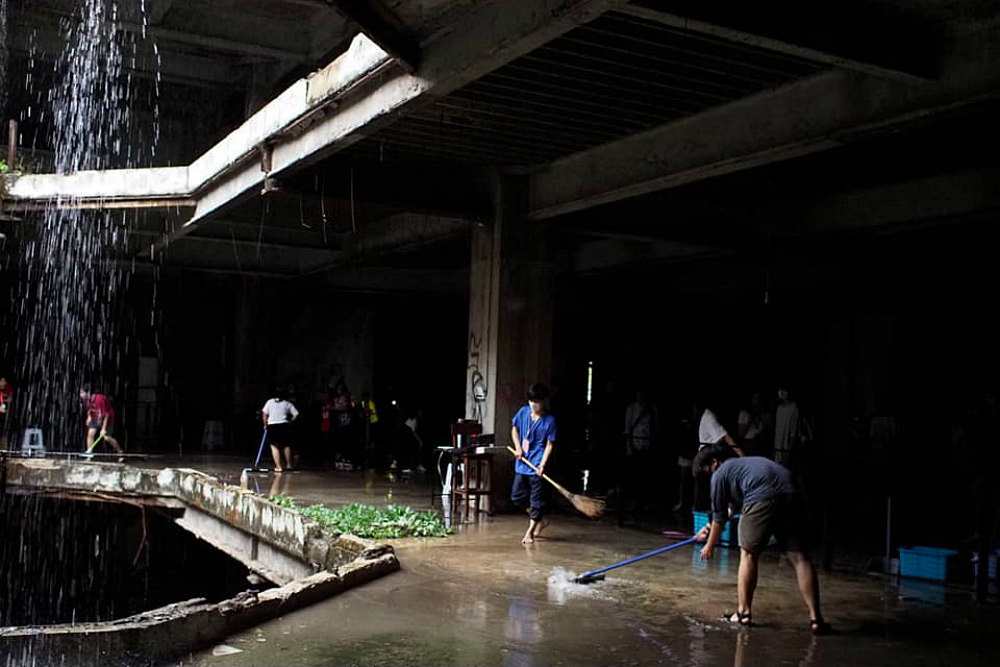
Together with Gaysorn Lamphu, a local association established nearly two decades ago where local seniors train kids in their community as city guides, Tovivich organized the first ever ‘New World’ exhibition for the local residents, exclusively. The concept was simple: Every day, 20 different objects were displayed inside the building and locals from the community were invited to talk about their memories of the building.
“While I primarily saw the building as a strategic location, a strong structure and an empty space, locals saw it full of meanings. Inside the mall they saw things we couldn’t possibly see anymore: former gold shops, a concert hall on the top floor […] Locals started to engage more, bringing their own objects to the art event to add more to the exhibition!” says Tovivich.
After this first exhibition the mall received a lot of publicity in the news. Tovivich intended to flood the internet with new images and articles about the ‘New World’ Mall that would leave a new digital footprint of the space. It would portray a reborn structure full of possibilities, instead of a dystopian space, only good for illegal sightseeing and tourists hungry for creepy stories of a contemporary ruin. And she thought a new intervention could reinforce its new identity. Tovivich asked Pol Huiprasert to direct the art exhibition called ‘Reflection from Light Sources’. He curated and designed most of the art installations (8 of 9 pieces) and he invited a group of young designers to design one piece.
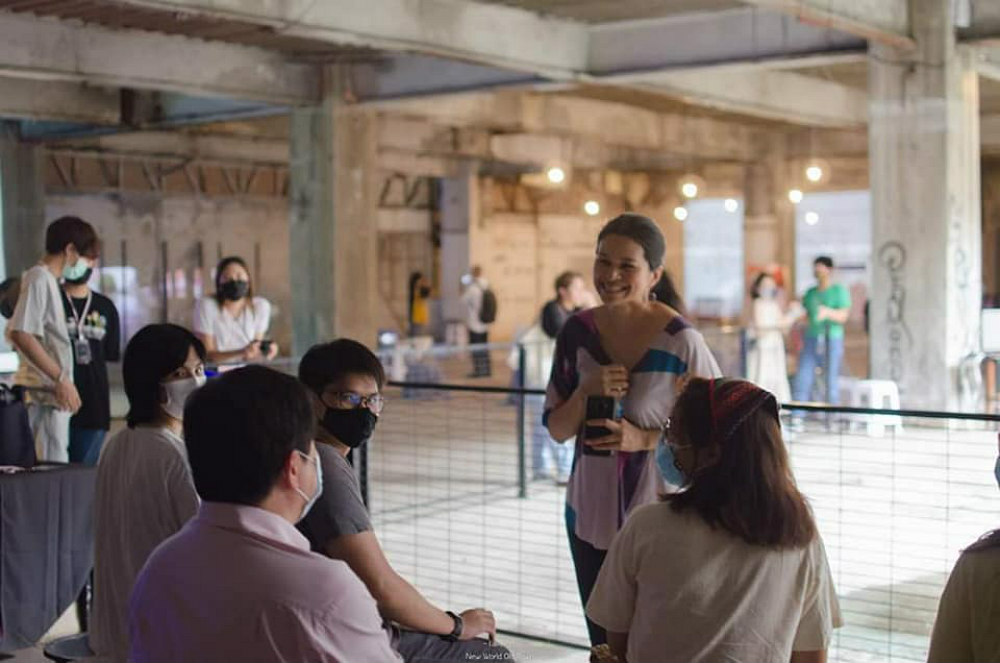
In 2022 the abandoned mall temporarily opened its walls to the public as part of the Bangkok Design Week and became the highlight of the largest design event in SouthEast Asia. The festival is organized and hosted by the Creative Economy Agency that referred to the event of ‘New World’ as The Return of Old Building Revival Mission. Its opening has marked a significant turn in urban regeneration practices across the Thai capital. Although the event was ephemeral and lasted for a week, this process laid profound positive dynamics for the future of the local community and, one dares to say, for the future of the city.
***
From an apocalypse-like building to a hipster art destination, the multi-layered exhibition at the Bangkok Design Week not only spoke of the potential of the old mall to be restored in the future but also about the history of the area and the necessity to consider other such structures for alternative regeneration of public space in Bangkok. During our conversation, Tovivich pointed out that “The first year the aim was to use art as an excuse for people to engage again with the building and revisit it. ‘New World’ Mall was used as a box for collecting the memories of the neighborhood from the people. As many stories that were never collected online because they existed before the internet. […] The second exhibition, this time open to the public, ought to bring people from outside for business opportunities and a renewed image popularity”.
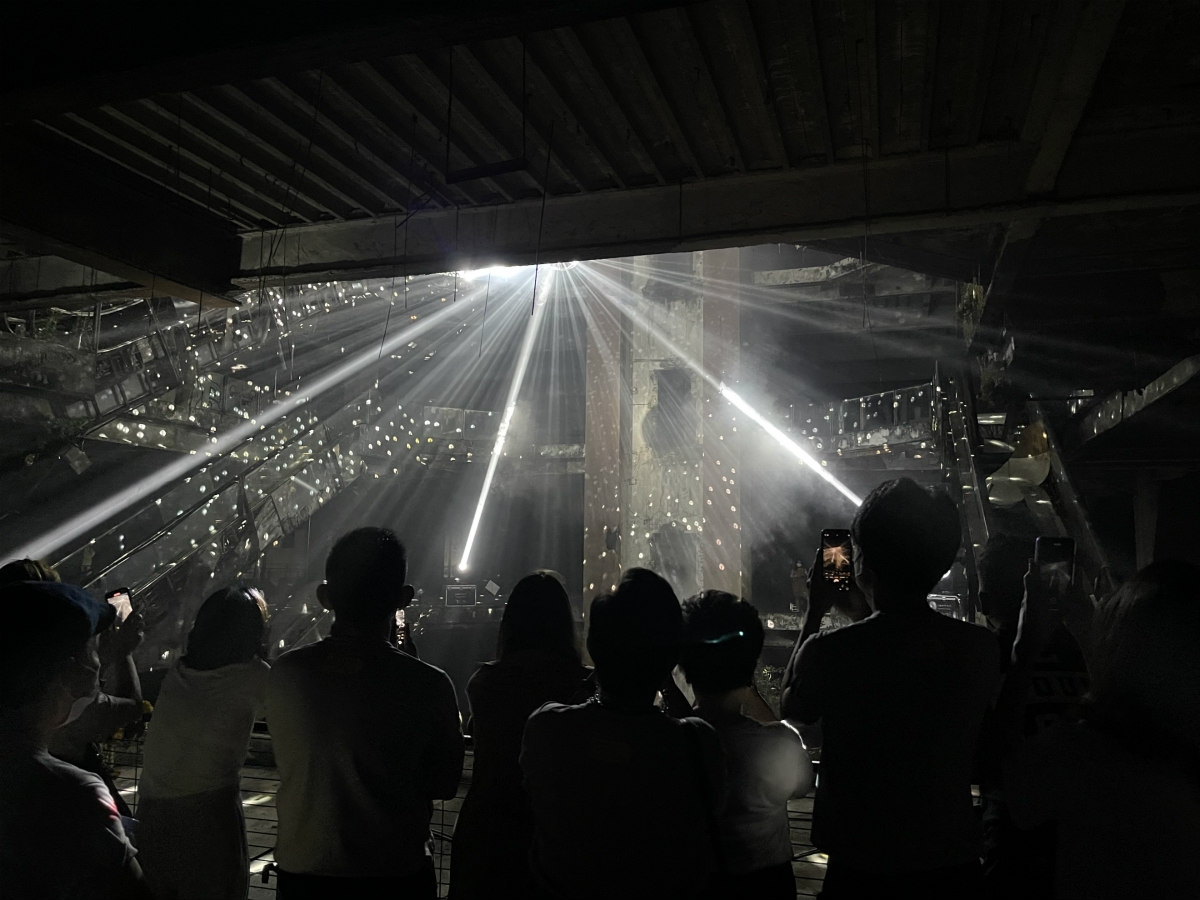
In the same year, ‘New World’ intervention echoed various initiatives that advocate for more local action to preserve landmarks across the country. For example, Awakening Bangkok, the fifth edition of Time out Bangkok’s signature festival showcased 37 light and digital art shows at 20 different locations. The installation named RE:VIVE metaphorically shone light on derelict places in the city. It revealed untold stories and brought to the table a conversation about a desired sustainable future for buildings. Another exhibition at The Bangkok Art & Culture Center (BACC) titled Something was there: the fading memories of Bangkok Contemporary Architecture used photography to question the speed at which architectural landmarks are being demolished, and with them people’s memories.
Slowly, there is a growing interest in decaying buildings and their potential to foster socialization and safeguard memories in Bangkok. My two-years research project at Chulalongkorn University revealed that Bangkokians perceived a contemporary ruin in the city center useful as an opportunity for additional public space in the future as well as a symbol of its history, eventually becoming icons that support their identity.
Most of the local residents who I spoke with were upset about the disappearance of landmarks and suggested the ‘New World’ Mall could become a green park, a school, a museum, an art fair, a fashion show, a food market, or a jazz club, giving urban planners plenty of ideas for its adaptive reuse. Beyond Bangkok, in the second largest city of Thailand, Chiang-Mai, researchers have stepped up to protect the collective memories threatened by rapid urban development and are currently documenting in archives the disappearing traditional community life of the locals.
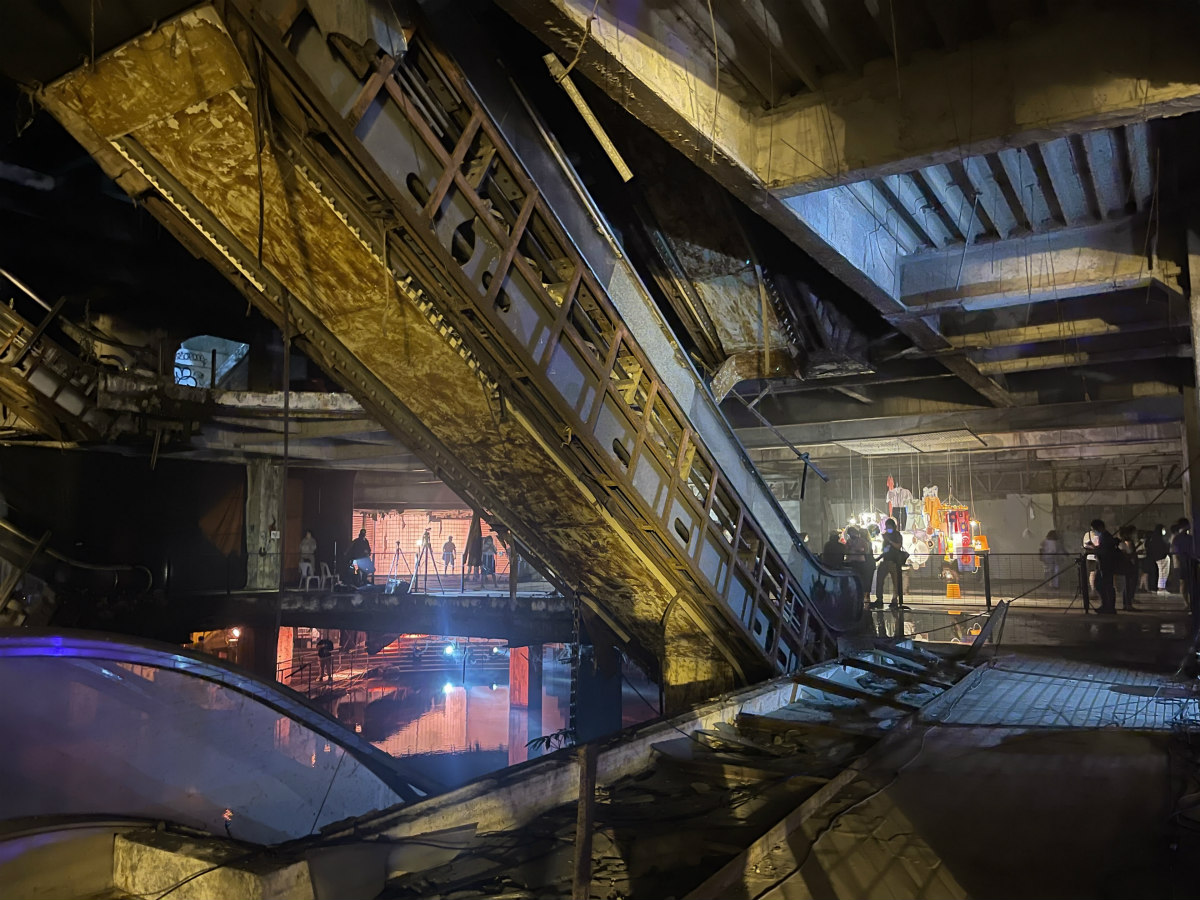
A non-businessman owner; a sound-built structure; a strong community; interesting storytelling; yes, says Tovivich, a combination of fortunate factors played a key role in the successful temporary reuse of the mall. However, regenerating massive abandoned private properties for public purpose is a path fraught with pitfalls. But it is a solution to reclaim public space and avoid big scale destruction and displacement in the city centers of Southeast Asian cities. Usually, a contemporary ruin has a strategic location, major accessibility, and an aura that speaks to people, yet they are extremely under-rated.
Tovivich and the team behind the abandoned ‘New World’ Mall project successfully demonstrated that community-led initiatives could pave the way to revive these ghosts of a troubled past into a brighter urban future. She will continue with the project in the Banglamphu neighborhood (Khao San Road), building momentum in Bangkok with the participation of local residents. And perhaps finally, these abandoned buildings could be true to the names they were given.
